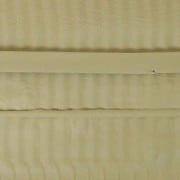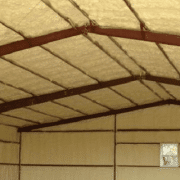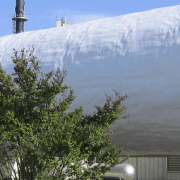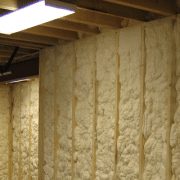Using Radiant Foil Attic Insulation
[ad_1]
During the winter you lose up to 75% of your home’s heat through the attic. In the summer, temperatures in the attic can reach 140F. Even if you have fiberglass or cellulose insulation in your attic, heat is still escaping – from your living space in the winter and from the attic into your living space in the summer.
A relatively new type of insulation on the market is radiant foil. It uses reflective foil to block radiant heat energy. The reflective surface keeps hot sun from invading the cool air space in the summer and keeps warm air from escaping in the winter. With foil on both sides of the product, it blocks 97% of radiant heat transfer.
You can add radiant barrier insulation to your existing insulation to greatly improve its performance. It’s surprisingly easy to do and the materials are very low-cost. The product comes in rolls of flexible aluminum reinforced with a woven scrim that provides outstanding tear and tensile strength. The product is metalized aluminum which allows for greater reflectivity, and is coated for durability and corrosion-resistance.
Installation for cold weather climates is different than for warm weather climates, but both methods can be used in the same attic space and in addition to existing fiberglass insulation. Installation is clean, quick and easy.
Cold Climates
When installing radiant barrier attic insulation in cold climates a perforated product should be used. The perforations provide breathability allowing moisture vapor to escape eliminating the possibility of condensation problems. The product can be rolled out across the attic floor right over top of any existing insulation.
Warm Climates
In warm climates radiant barrier attic insulation should be installed under the roof rafters. It will bock up to 97% of the sun’s radiant heat waves from entering your attic. This method will keep your attic cooler, in turn requiring less energy from your air conditioning unit. In this case the product is rolled over the face of roof rafters and stapled thoroughly. The perforated or the solid product can be used in this application, but if you use the solid product, you should make sure there is at least 6″ of space on top and bottom of the product to allow for adequate ventilation.
Radiant Foil vs. Fiberglass
Radiant foil insulation differs from traditional fiberglass insulation because it reflects heat whereas fiberglass absorbs heat. Once fiberglass absorbs all the heat it can, some of the heat escapes. R-Value measures convective and conductive heat transfer, but not radiant heat transfer so the effectiveness of radiant barrier insulation is not usually measured with R-value.
Fiberglass is made of recycled glass and limestone among other things. When working with it you must wear gloves and protective breathing equipment. Fiberglass insulation loses its effectiveness when it becomes damp and can form mold so in most cases requires the installation of an additional vapor barrier. Fiberglass is also prone to rodent and pest infestation.
A four-foot by 125-foot roll of perforated or solid radiant barrier insulation runs around $75. A 250-foot roll can be purchased for about $125. Since the rolls are lightweight, shipping costs are also reasonable.
[ad_2]








